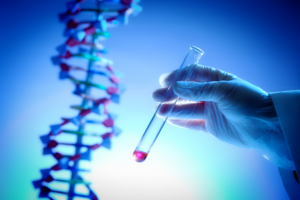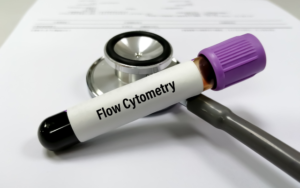Stem cells are remarkable entities that play a pivotal role in the development and maintenance of living organisms. They possess the unique ability to self-renew and differentiate into various specialized cell types, making them a fundamental component of both embryonic and adult tissue development. In this advanced-level blog, we delve into the world of stem cells, exploring their types, roles in development, and the groundbreaking potential they hold in the realm of regenerative medicine.
Table of Contents
Types of Stem Cells
Embryonic Stem Cells (ESCs)
Embryonic Stem Cells (ESCs) stand as the cornerstone of developmental biology, captivating researchers with their unique potential. Derived from the inner cell mass of blastocysts, these pluripotent cells possess the remarkable ability to differentiate into any cell type in the human body. Their significance in development is unparalleled, serving as a driving force in the creation of complex organisms.
Key Points:
Versatility Beyond Measure: ESCs have the unparalleled capacity to differentiate into all three germ layers—ectoderm, mesoderm, and endoderm—ultimately giving rise to a wide array of specialized cells and tissues in the body. This adaptability is a testament to their role in the intricate process of development.
Blueprint for Future Therapies: ESCs offer unparalleled potential in regenerative medicine. By coaxing them into specific cell types, scientists can pave the way for novel treatments. For instance, ESCs can differentiate into insulin-producing beta cells, offering hope for diabetes patients seeking functional pancreatic cells.
Ethical Considerations: Despite their immense promise, ESC research has sparked ethical debates due to their origin from early-stage embryos. The ethical balance between scientific advancement and moral concerns underscores the complex nature of harnessing their potential.
Embryonic Stem Cells, with their capacity to shape the destiny of a developing organism, epitomize the intricate dance of cellular differentiation that underpins life’s intricate tapestry. The ongoing exploration of these cells continues to redefine the boundaries of our understanding and holds the potential to revolutionize the landscape of regenerative medicine.
Adult Stem Cells (ASCs) or Somatic Stem Cells
Adult Stem Cells (ASCs), also known as Somatic Stem Cells, are integral players in the complex symphony of development and tissue maintenance. Unlike their embryonic counterparts, ASCs reside in various tissues throughout an individual’s life, ready to respond to repair needs and ensure tissue homeostasis. ASCs possess the remarkable ability to differentiate into specialized cell types, aiding in the regeneration of damaged tissues and organs. These cells play a pivotal role in the continuous growth, repair, and rejuvenation of the body, making them key components in the narrative of Stem Cells and Their Significance in Development.
Examples of ASCs in Action:
Hematopoietic Stem Cells: Nestled within bone marrow, hematopoietic stem cells produce a variety of blood cells such as red blood cells, white blood cells, and platelets. This perpetual production is essential for oxygen transport, immune defense, and clotting, showcasing ASCs’ crucial role in sustaining life.
Neural Stem Cells: In the brain’s subventricular zone and hippocampus, neural stem cells contribute to the formation of new neurons and glial cells. This ongoing neurogenesis is essential for learning, memory, and adapting to new experiences, underlining ASCs’ involvement in cognitive development.
Unveiling the Potential of ASCs in Tissue Regeneration
The significance of ASCs in development extends beyond maintenance and repair. These cells hold immense potential in tissue regeneration, presenting opportunities to treat degenerative diseases and injuries that were once considered irreversible. ASCs can be coaxed to differentiate into specific cell types required for the repair of damaged tissues or the replacement of dysfunctional cells. This regenerative capability has sparked excitement within the medical community, as it opens doors to novel therapeutic approaches and cures that harness the power of Stem Cells and Their Significance in Development.
Examples of ASCs in Tissue Regeneration:
Cardiac Muscle Repair: ASCs present in the heart’s muscle tissue can differentiate into new cardiomyocytes, potentially aiding in repairing damaged heart tissue after a heart attack or in cases of heart failure.
Skin Regeneration: Skin-derived stem cells contribute to wound healing and skin renewal by differentiating into keratinocytes and other cell types, showcasing ASCs’ role in maintaining the body’s protective barrier.
From Development to Future Possibilities
The versatile nature of ASCs not only contributes to the development of specialized tissues but also holds promise for groundbreaking therapeutic interventions. As scientific advancements continue, ASCs are being explored for their regenerative potential in treating a wide range of conditions, from spinal cord injuries to degenerative disorders like Parkinson’s disease. The ongoing research in Stem Cells and Their Significance in Development underscores the transformative potential of ASCs in reshaping the medical landscape, offering hope for previously untreatable conditions and revolutionizing the way we approach healthcare and healing.
Induced Pluripotent Stem Cells (iPSCs)
Induced Pluripotent Stem Cells (iPSCs) represent a groundbreaking advancement in stem cell research, offering a revolutionary approach to understanding development and regenerative medicine. iPSCs are generated by reprogramming adult cells, such as skin cells, to revert to a pluripotent state akin to embryonic stem cells (ESCs). This scientific feat, achieved by Nobel laureate Shinya Yamanaka, holds immense significance in unraveling the intricacies of development and fostering therapeutic breakthroughs.
Key Points:
iPSCs serve as versatile tools to study developmental processes, mimicking early embryonic stages in a controlled environment.
Example: Researchers can differentiate iPSCs into various cell types, such as neurons or cardiac cells, to investigate how these cells form during embryogenesis.
These cells hold potential for personalized medicine, as iPSCs can be derived from a patient’s own cells, minimizing immune rejection risks in transplantation.
Example: iPSCs derived from a patient’s skin cells can be coaxed to develop into insulin-producing pancreatic cells for diabetes treatment.
In conclusion, iPSCs shine as a beacon of hope in the realm of stem cells and their significance in development. With their ability to model diseases, study development, and provide patient-specific therapies, iPSCs propel the field of regenerative medicine into an era of unprecedented possibilities. This groundbreaking technology underscores the crucial role stem cells play in unraveling the mysteries of development and holds the promise of reshaping medical interventions for a healthier future.
Roles of Stem Cells in Development
Foundation of Development Through Stem Cells
Stem cells play a pivotal role in the intricate process of development, acting as the building blocks upon which life’s complexities are constructed. As the body’s master architects, stem cells are responsible for the formation of diverse tissues and organs, beginning with the establishment of the three primary germ layers during gastrulation. These germ layers—ectoderm, mesoderm, and endoderm—stem from the differentiation of pluripotent stem cells, enabling the eventual development of essential structures such as the nervous system, muscles, and internal organs. For instance, stem cells within the ectoderm differentiate into neural tube cells, which lay the foundation for the brain and spinal cord, showcasing the remarkable significance of stem cells in sculpting the early stages of life.
Orchestrating Organogenesis and Tissue Homeostasis
Beyond their role in initial germ layer formation, stem cells orchestrate the intricate process of organogenesis, ensuring that each organ’s complex structure is delicately fashioned. Through precise differentiation pathways, stem cells contribute to the creation of specialized cells that collectively form organs like the heart, lungs, and liver. Moreover, stem cells maintain tissue health and function throughout adulthood, actively participating in tissue homeostasis. A prime example is the intestinal stem cells that incessantly regenerate the gut lining, a vital process for optimal digestion and nutrient absorption. This constant renewal underscores the stem cells’ integral role in sustaining the body’s equilibrium long after the initial phases of development.
Unlocking Potential: Stem Cells in Regenerative Medicine
Stem cells’ significance extends beyond developmental stages into the realm of regenerative medicine, where their unique properties hold the promise of revolutionizing medical treatments. With their capacity for self-renewal and differentiation, stem cells offer a potential solution for addressing previously untreatable conditions. For instance, mesenchymal stem cells, derived from various sources like bone marrow, have shown potential in regenerating bone fractures and repairing cartilage injuries. Moreover, the concept of cell replacement therapy gains traction as stem cells can be harnessed to generate specific cell types, offering hope for conditions such as Parkinson’s disease, where dopaminergic neurons derived from stem cells could potentially replace the neurons lost due to the disease’s progression. Stem cells’ significance in development seamlessly intertwines with their transformative potential in regenerative medicine, shaping a future where the boundaries of medical possibilities continue to expand.
Potential Applications in Regenerative Medicine: Healing with Stem Cells
1. Tissue Regeneration: Stem cells hold immense potential for regenerating damaged tissues and organs, offering hope for conditions like spinal cord injuries, diabetes, and heart diseases.
Example: Mesenchymal stem cells are being explored to repair bone fractures and cartilage injuries.
2. Cell Replacement Therapy: Stem cells can be differentiated into specific cell types to replace malfunctioning cells, as seen in Parkinson’s disease and retinal degeneration.
Example: Dopaminergic neurons derived from stem cells can potentially replace lost neurons in Parkinson’s patients.
3. Drug Testing and Disease Modeling: Patient-specific iPSCs allow scientists to study diseases in a controlled environment and develop personalized drug treatments.
Example: iPSCs derived from Alzheimer’s patients can aid in understanding disease mechanisms and testing potential therapies.
Conclusion
Stem cells, with their remarkable capabilities, offer a window into the intricate world of development and regeneration. The diverse types of stem cells, their roles in development, and their potential in regenerative medicine highlight a promising path toward treating previously untreatable conditions. As research advances, the future holds the promise of harnessing the power of stem cells for a healthier and brighter tomorrow.




